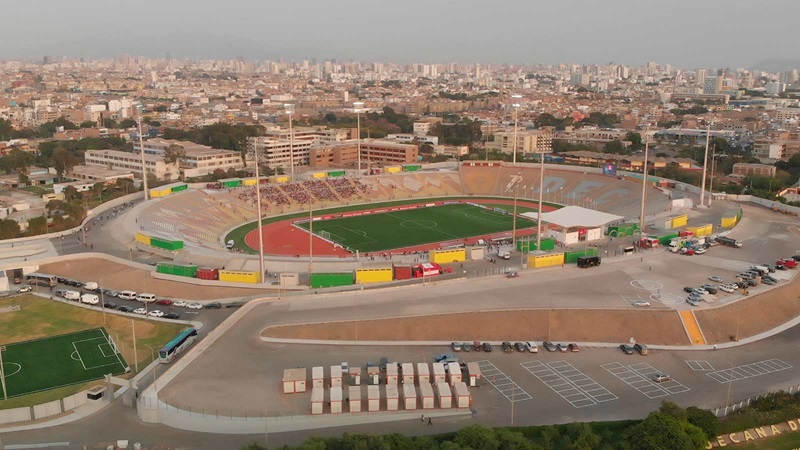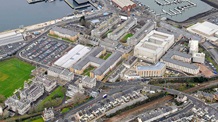Perspectives
The Lima 2019 Games – what we can learn from its legacy
It’s been five years since Mace was appointed to the UK Delivery Team under a Government-to-Government agreement with Peru to deliver the Lima 2019 Pan-American and Parapan American Games. Oliver Conde, Mace’s Regional Manager for LATAM and Country Manager for Peru, takes a look at what our industry can learn from the legacy it left behind.
Legacy. A word synonymous with successful infrastructure. Not just a testimony to past glory, but a symbol of investment well-made for the future.Effective delivery of infrastructure goes far beyond the completion of the structural buildings themselves. To fulfill its true purpose, infrastructure should make a lasting, positive impact on communities, transforming their quality of life for the better.
In our industry we talk about ‘legacy’ knowing full well that it can take decades to achieve. Programmes that are not underpinned by long-term planning and collaboration are often delayed, derailed and over budget. Therefore, the Lima Games shines brightly as an example of success.
The Peruvian government’s commitment to new sports infrastructure and governance methods, offered an opportunity from the very start for the programme to be transformational. Merely five years later, we can look back as an industry and see that through an innovative, collaborative delivery approach, Lima 2019 achieved what it set out to achieve for the future.
Making an impact
As the second largest multidisciplinary sporting event in the world, the Lima 2019 programme comprised USD$ 500 m of complex infrastructure, which was procured, designed and constructed within a 20-month period, along with a range of overlay and operations packages making up the total USD$1.2bn of investment.
The Delivery Team completed 1,086 apartments in the Athletes Village in 18 months, and the Aquatics Centre at Videna Sports Complex in 15 months, nine months ahead of the international benchmark of 24 months. Although the Games themselves lasted for two months, the lights are still on, with venues being used by elite athletes and the local community alike, reminding us that our industry can create long-term benefits with broader social impact.
Physical longevity
Anyone visiting the Games sites today, will see venues that are as vibrant and pristine as they were in the summer of 2019, with the very buildings themselves testament to good investment. Forward-thinking, collaboration and clarity of purpose at the start of the programme were crucial in ensuring that they would stand the test of time.
By drawing on global best practice and local expertise, the infrastructure was continually improved through the design and construction phases to make the venues suitable for both Games and legacy use. Proactive maintenance also played a key role for longevity. The procurement of a long-term facilities management provider not only ensured that high-quality levels would be maintained but it also added increased value for money to the initial investment.
Consequently, the buildings could be repurposed for the Peruvian government’s COVID-19 response, acting as hubs for the roll-out of the vaccine programme, while also being available for national and regional sporting championships and local events throughout 2021 and 2022.
Strengthening communities
As an event, the Games boosted an interest in sports and the venues are open for use by schools, elite athletes, and the local population. Over the past three years, the venues have hosted Peru’s South American Athletics Championship and Paralympic swimming competitions.
Our team in Lima have built lasting relationships in Lima, in particular Villa Maria del Triunfo, where support for the schools and local community kitchens, the ‘Ollas Communes’, is ongoing and has enriched the lives of every colleague who has worked in the country. This type of community legacy reminds us that the work our industry delivers touches people’s lives long after we have finished.
Institutional transformation
Looking more broadly, it is plain to see the impact of the Lima 2019 Games on the public sector. The Games served as a catalyst for the development of new models of delivering infrastructure programmes and implementation of collaborative ways of working between private and public sectors. Collaborative contracting (NEC3) was introduced to Peru to accelerate delivery and solutions such as PMO and Building Information Modelling (BIM) have become part of Peruvian law for programme delivery.
In fact, some of the most important infrastructure in Peru is now delivered under Government-to-Government (G2G) agreements, which has spurred the development of the next iteration of delivery partnerships. Many of the lessons learned have transferred onto the Reconstruction with Changes and Bicentennial School programmes in Peru, both of which are building critical social infrastructure across the country.
Forward-looking progress
The value in examining Lima 2019 is not just to celebrate its successes but to appreciate what collaboration and transfer of knowledge meant for the future. Every project is more than the sum of its multiple, varied and often complex parts, and the onus is on us to futureproof it. Our industry must make it a priority to collaborate from the outset to deliver structures that stand the test of time, supporting communities to make progress because of their proximity and access to these buildings, and drawing on the lessons that we learn from working together. That is how we leave a legacy.












